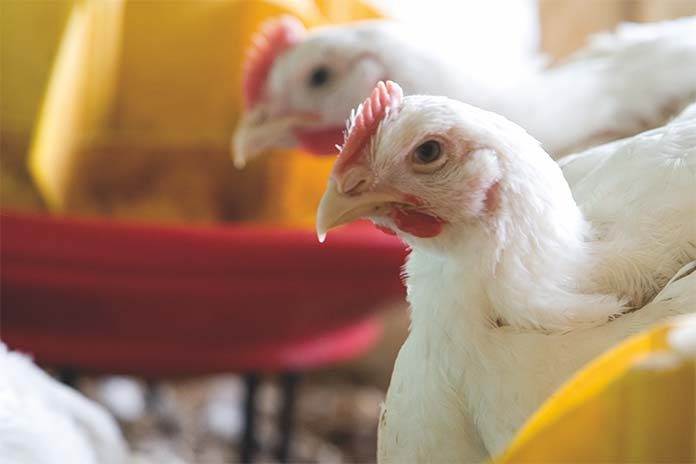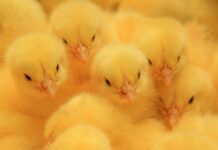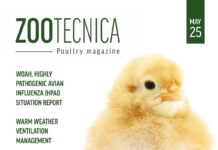
USPOULTRY and the USPOULTRY Foundation announce the completion of a funded research project at the University of Georgia in Athens, Georgia, in which researchers examined alternative feeding programs and photostimulation periods for broiler breeders. The research was made possible in part by an endowing Foundation gift from Dr. Don and Teresa Jackson and is part of the Association’s comprehensive research program encompassing all phases of poultry and egg production and processing.
The research, entitled “Improving Broiler Breeder Flock Welfare and Reducing Stress Through Early Photostimulation and Spin Feeding”, has been done by Dr. Drew Benson and colleagues from the University of Georgia, whom investigated how alternative feeding regimes and the shortening of the rearing period of broiler breeders could be economically beneficial to the poultry industry. Research showed that age at sexual maturity in broiler breeder pullets can be significantly advanced with the use of a less restrictive growth curve during rearing to reach target body weight and surpass the trigger for sexual maturation as early as 15 weeks of age.
Summary
While the current restricted feeding programs, such as skip-a-day feeding, improve the economic efficiency of broiler breeder operations and increase the numbers of broilers produced by the industry, this management practice of feed restriction impacts animal welfare. Feed restricted birds show signs of chronic hunger and biological distress. Previous research examined different strategies to minimize this stress, including diet dilution, spin feeding and the use of appetite suppressants. Consumers are increasingly concerned about how and under what conditions the animals in the food system are raised. These consumers show increased interest in more “natural” rearing conditions in animal agriculture. Therefore, the basis of this research was to examine two different rearing growth curves/photostimulation ages and two different feeding regimes. This research looked at the impact of (a) advancing the age of photostimulation (15 weeks) and corresponding attainment of the target body weight (2.1 kg) on reproductive efficiency in broiler breeders. Additionally, (b) it investigated the effectiveness of the natural feeding practice of spin feeding on birds under the two different growth curves.
Results from this trial demonstrated that age at sexual maturity in broiler breeder pullets can be significantly advanced with the use of a less restrictive growth curve during rearing to reach target body weight and surpass the trigger for sexual maturation as early as 15 weeks of age. Data also showed that there are production advantages to using every day spin (EDS) feeding during rearing that could benefit consumer perception of poultry production by utilizing a feeding method that allows for birds to utilize their natural foraging behavior. Although the advancement of age for sexual maturation and egg production didn’t result in a greater number of eggs produced, it did show proof that a feeding strategy could possibly be optimized for birds to improve egg production that could match or surpass standard rearing and photostimulation practices. The birds photostimulated at 15 weeks of age were at a heavier weight upon age at first egg, and that likely contributed to the comparatively poorer egg production numbers and may have potentiated the increase in that group’s mortality. There was no overall impact on fertility when both pullets and cockerels were brought to sexual maturity 6 weeks earlier than standard commercial conditions.
A better understanding of the underlying mechanisms behind the metabolic trigger for the onset of sexual maturation or the development of an optimized feeding strategy for early photostimulation would improve egg production in the hens photostimulated at 15 weeks while allowing for a relaxed feed restriction program during rearing. With an optimized feeding strategy, the shortening of the rearing period could be economically beneficial as it would shorten the period of no return and lengthen the productive period for hatching egg production. These results indicate that there is potential with this alternative strategy to rearing broiler breeders.

















